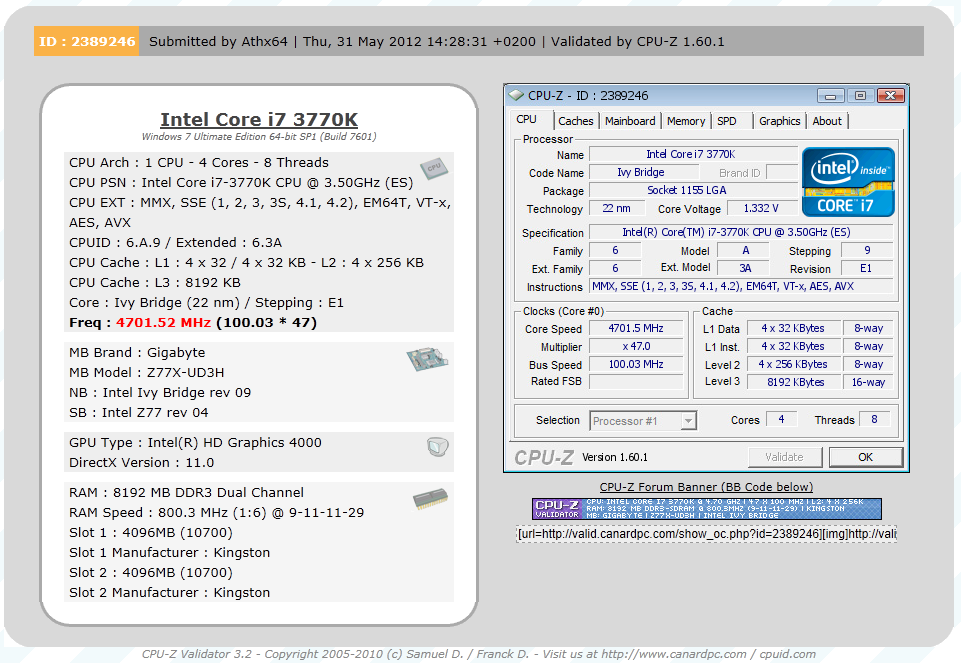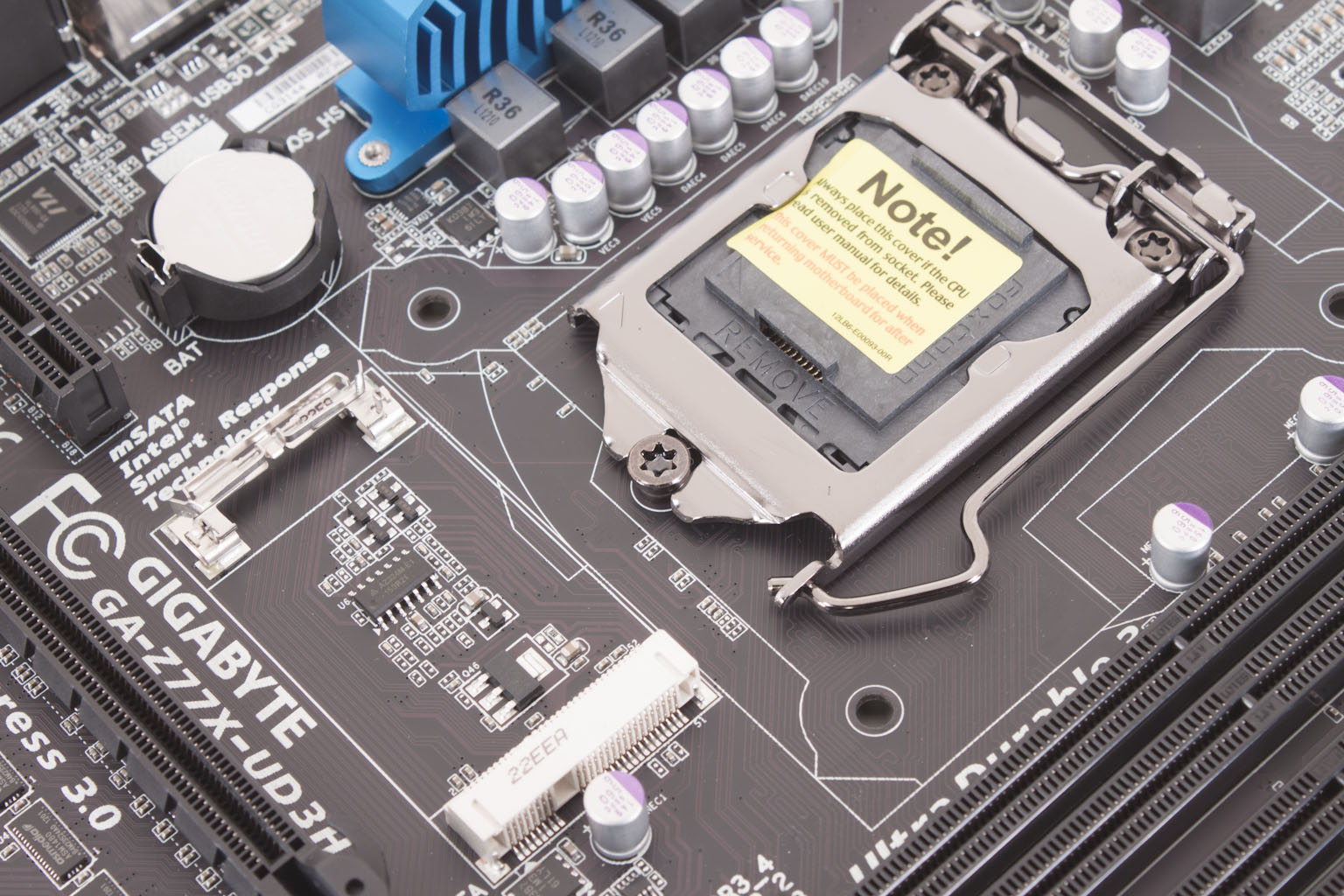BIOS -
BIOS is an acronym that stands for Basic Input/Output System. It is meant to control your product at a very low level. As of right now there are three regularly used BIOS formats (there are actually more than that but there are three common ones). These are the AMI (American Megatrends Incorporated), Award, and Phoenix. The new 3D BIOS version on the Z77 line up feels much smoother than what we saw on the P67 line up and even on the X79 based boards. There were only a few times where we ran into lag while using this BIOS. You can check out the video we shot of the BIOS below.
Overclocking –
We ran into a bit of trouble overclocking the Z77X-UD3H. Normally we can hit 4.8GHz with our Core i7 3770k, but we just were not able to find a stable mix with the UD3H. No matter what combination of settings we tried the board would not pass all of our tests at that clock speed. In the end we did settle for 4.7GHz at 1.35V. This was the sweet spot and as you will see from the scores below it was not that far behind the 4.8GHz clocks we have gotten with other boards.
Of course overclocking is a picky subject. I can buy to identical CPUs from the store and they will not always perform the same way under stress. This is the same with motherboards, RAM and GPUs. So again it is important to keep in mind that our results represent a specific hardware configuration. Yours may be similar but will rarely be identical.
Overclocking Tools -
Following along the same lines as our video coverage of the new graphical BIOSes on most motherboards we are starting to cover the overclocking tools and add-in utilities using video as well. This is a much better format and allows more information to be delivered about what the software can do. With the Gigabyte Z77X-UD3H the tools in question are EasyTune 6 and their 3D Power application. Both are good apps although we did have some issues with EasyTune 6 and our 3770k.

 After spending some time working with the Gigabyte Z77X-UD3H and all of the features that are packed into this board we are ready to cover the performance and user experience side of this motherboard. For those of you that might have missed it you can catch our
After spending some time working with the Gigabyte Z77X-UD3H and all of the features that are packed into this board we are ready to cover the performance and user experience side of this motherboard. For those of you that might have missed it you can catch our 

